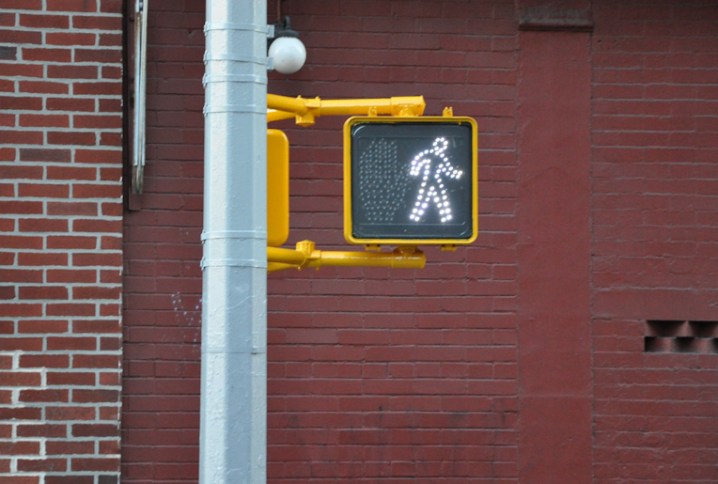
While we fully acknowledge that the act of pushing a button to indicate your presence at a signalized crosswalk isn’t exactly a chore worthy of complaint, researchers at the Institute of Computer Graphics and Vision in Graz, Austria, have nevertheless created a new system that brings such crosswalks firmly into the 21st century.
Mindful of the fact that you don’t always have a free hand to press the button, and perhaps wanting to eradicate forever the odd sight of someone whacking the button repeatedly in the mistaken belief that it’ll bring traffic to a halt more quickly, the researchers have built a signalized crosswalk that replaces the button with a camera that detects when someone wants to step into the road.
While today’s signalized crosswalks stay green for pedestrians for a set number of seconds, the new system can extend the “walk” period to accommodate large groups or slow-moving folks, or shorten it if it’s just one person zipping across the street. This helps to optimize traffic flow while at the same time improving safety.
The researchers also note how the system would end the practice of folks who find it amusing to press the button as they pass, even though they have no intention of crossing — a time-wasting act that leaves drivers stuck at a red light even though no one is crossing the street.
The setup is actually pretty simple. Atop the light on each side of the street is a camera that monitors the space where pedestrians wait to cross.
“It requires one second to estimate the [pedestrian’s] intention; after two seconds the estimation becomes reliable,” explained researcher Horst Possegger, adding that the system functions much more quickly than conventional button-based crossings.
Privacy campaigners will be pleased to know that the camera’s images are only analyzed locally and are not stored or streamed beyond the software based at site of the crossing.
The city plans to introduce the new lights at selected crossings in the Austrian capital, Vienna, in 2020 for a trial period, with more locations added if the system is deemed a success.
In the future, crosswalks will communicate with autonomous cars to ensure maximum safety for both pedestrians and motorists. But until then, Austria’s updated crosswalks seem like a useful improvement on the current design.


